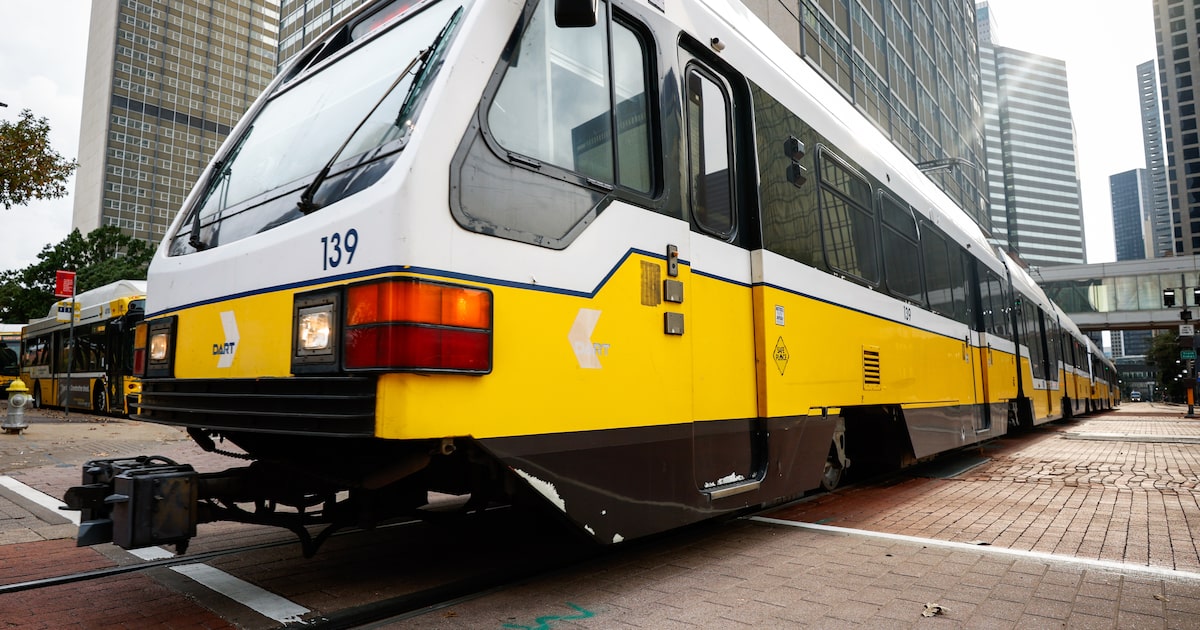During Dallas Area Rapid Transit’s long-awaited opening of the Silver Line in October, riders packed the trains, excited to try the new rail that runs from DFW International Airport to DART’s Shiloh Road Station in Plano.
This was a moment of celebration for the expansion of rail in a region long dominated by cars and highways, but the fanfare has been overshadowed by member cities weighing whether to leave DART altogether in the weeks since the new rail’s debut.
This newspaper reported that residents of Irving, Farmers Branch, Highland Park and Plano, the suburban anchor at the end of the Silver Line, are set to vote next year to decide if they will pull out of DART.
What’s the good of having a 93-mile rail system with 65 stations if some of the cities it’s supposed to serve are ready to walk away?
Opinion
We don’t want to see cities bail on DART. North Texas needs a strong regional transportation system that connects people to jobs, schools and neighboring cities. The Silver Line could be a step towards shifting the culture around public transportation. However, if DART wants to keep its member cities in the fold, it must demonstrate that it hears their concerns and can be flexible.
The agency has an opportunity to show it can do that by coming to the negotiating table with the city of Plano, one of DART’s most vocal critics. According to documents supplied by a Plano official, the city recently made DART an offer. If the agency were to accept, the city would agree to stop pursuing legislative action and call off its withdrawal election.
Under Plano’s proposal, DART would start returning a portion of the city’s sales tax contribution in 2026, with the amount increasing annually to reach half Plano’s total contribution by 2029. Each of the agency’s 13 member cities pay a 1-cent sales tax contribution to the agency. Plano’s recaptured sales tax dollars would be used for other mobility purposes.
The proposal would also see DART end most services in the city by 2029, leaving only rail service and express buses. Eliminated services would include on-demand GoLink, a city official said. With input from the community, the lost GoLink and bus services would be replaced by a separate microtransit service.
Whether or not that’s feasible, we don’t know. Our guess is that, even if it is, this sort of thing would be hard to scale if multiple member cities asked for it.
But it can at least be a starting point for desperately needed negotiations. The transit agency needs to recognize it has limited leverage. It needs to work more closely with the suburbs, stop prioritizing the city of Dallas above everyone else and show it can be a better regional partner.
Above all, North Texas must find an outcome that keeps our rail system intact and running as one.
DART’s focus on bus service over rail has created a mismatch between what suburban cities expected and what the agency ultimately delivered.
When DART was created in the early 1980s, it inherited Dallas’ bus system and expanded into surrounding cities. Buses became the backbone of the system, and still are. The bus system generally has higher annual and daily ridership than the light rail.
Prioritizing bus service may have seemed prudent, but it backtracked on how DART originally sold itself to the suburbs — as a regional connector that would support rail, spur development and tie cities more closely together.
According to Plano’s website, only about 4% of DART’s bus stops are in the city. The agency’s ridership and route performance update from earlier this year identified 11 bus routes that are struggling, three of which are in or near Plano.
Route 254, which runs between the Legacy West shops and Parker Road Station, averages only about 400 weekday riders, and Route 234, which serves neighborhoods near Parker Road Station, draws about 500. Route 245, which has stops located near Plano’s city limits, sees roughly 700 weekday riders on average.
DART is missing the mark with some of its member cities, and those cities are right to question whether the system reflects the regional vision they bought into.
But the solution isn’t for cities to walk away. DART needs to adapt and be more open to new ideas. That means rethinking suburban bus routes, expanding microtransit and on-demand service, and giving cities more say in shaping local service.
Much of the success of light rail hinges on solutions for the “last mile,” the stretch between a transit stop and someone’s final destination. Some areas are investing in denser, walkable development around rail stations — the kind that makes the last mile easier. Addison’s $240 million mixed-use project that will be built around its Silver Line station is one example.
We need more of this, and DART should encourage transit-oriented development that makes rail a true regional connector. At the same time, the agency must work to rebuild trust with its member cities if the Silver Line is to succeed.
